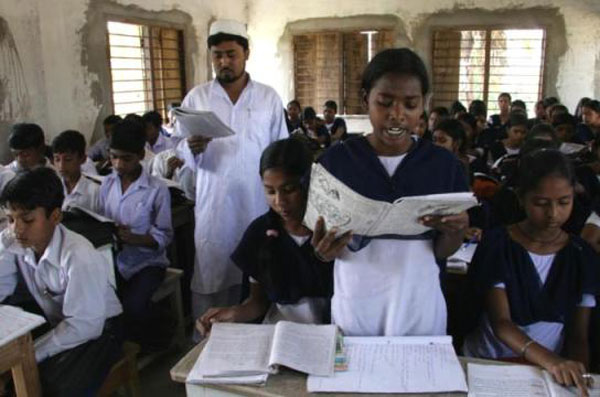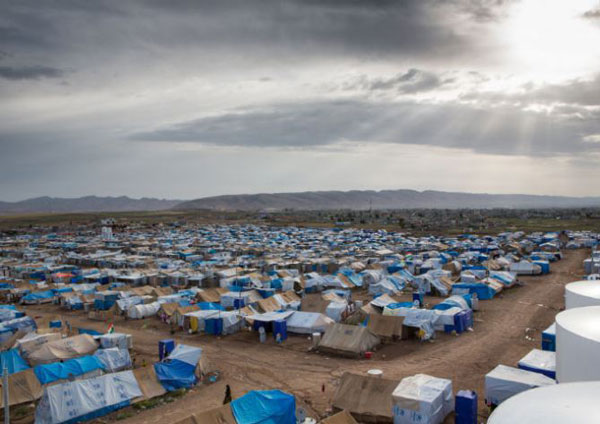Clad in white and blue salwar kameez (traditional Indian dress) and translating an Arabic verse from her Islamic studies textbook into Bengali, 15-year-old Puja Kshetrapal could pass for a Muslim. But she, along with almost half of the 200 tenth graders in Chatuspalli High Madrassa in Orgram village in India’s West Bengal state, are Hindus.
“Although it is called a madrassa (Islamic seminary), people in the area view it like a good regular school. So, my parents chose to send me to this institution,” Puja told Al Jazeera.
More than 60% of the students in Orgram Chatuspalli High Madrassa are non-Muslims.
Anwar Hossain, the headmaster of the Orgram madrassa located 125km north of the state capital, Kolkata, says that it is mostly its modern curriculum that has made the institution increasingly popular in the Hindu-majority society.
“Ordinary people believe that a madrassa is a place where students are taught only religious subjects, and that it has no connection with modern education,” Hossain said.
“For some years we have been working to change their notion. We are teaching our students all general subjects as their counterparts are studying in regular schools,” he said.
“After studying in our madrassa, children can plan their career in any field of their choice. This is the main reason why more than 60 percent of more than 1,400 students at the madrassa are non-Muslims now.”
Even, 11 of the 32 teachers in the madrassa are Hindu, Hossain added.
Madrassas are usually thought of as Muslim-only schools where children study only theology and end up as religious teachers or clerics.
After 9/11, many in the non-Muslim world viewed South Asia’s tens of thousands of madrassas with suspicion, regarding them as a breeding ground for radical strains of Islam.
But in recent years, defying the stereotype, nearly 600 government-recognised madrassas in West Bengal have introduced a mainstream school curriculum, and non-Muslims are studying in almost all of them.
Currently, about 15 percent of the students in the state’s modernised madrassas are non-Muslims, and many of them are expecting to become engineers, doctors, scientists and other professionals.
Orgram and other madrassas in the state have undergone modernisation offering courses in physics, chemistry, biology, geography, mathematics, computer science, English language and literature and other regular subjects.
Islamic studies and the Arabic language course form a small part of the curriculum.
Funded by the state, the madrassas which are located mostly in rural Bengal charge no fees, and offer free school uniforms and mid-day meals, making them especially attractive to students from poor and lower middle-class families.
Non-Muslim students studying in these madrassas have a special opportunity to get an exposure to Islamic as well as the modern western knowledge systems, and it is creating a new positive orientation to their life by combining the best of both the worldviews, he said.
“Madrassas based on strong intellectual traditions that draw from other cultures and religions can help overturn the historical divide between Hindus and Muslims, as easy access to Islamic tradition combined with other such traditions shall build up inter-cultural and inter-religious bridges,” Biswas said.
Agreeing to the view of Biswas, Prince Haldar, a 12th grade Hindu student at Orgram madrassa, said that his madrassa education had helped him better understand Islam and had brought him closer to Muslims.
“Before I came to study in this madrassa, I was told that Islam was a militant religion and Muslims could not be friends of Hindus. I also heard that Muslims were biased against other religions,” Prince told Al Jazeera.
“But now after studying in this madrassa for five years I have found that people have many incorrect beliefs about Islam and Muslims.”
Source: Al Jazeera





No Comments